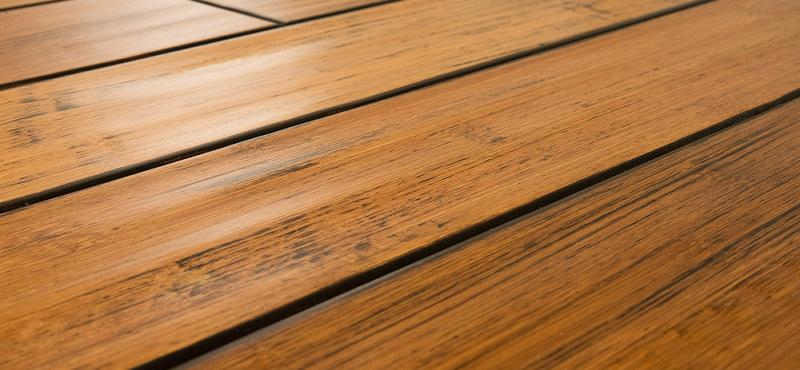Do you notice gaps in your flooring during the colder months? Don’t panic. All flooring types are susceptible to seasonal expansion and contraction, and your flooring contractor should have installed your flooring in a way to allow for it. Solid hardwood floors are particularly susceptible to seasonal expansion and contraction because wood is an organic material that will react to humidity and temperature changes within its environment.

In the winter, cold/dry air can actually pull moisture from your floor, causing the boards to contract and gaps to appear. In the summer, heat/humidity can replace that moisture and the boards will swell, closing the gaps created during the colder months. A properly installed floor will have an “expansion gap” (usually under your baseboards where you can’t see it) that gives the floor space to expand and contract naturally throughout the seasons.
Though seasonal gaps are normal, not all gaps are seasonal and may be cause for concern. Some gaps are the result of lack of or improper acclimation, climate control, or the species of wood itself. Before a hardwood floor is installed, the wood needs to acclimate to the specific environment of your home. This typically involves your flooring being delivered before your installation and allowing it to rest near the area it will be installed in. This is vitally important to the proper installation of your floor because the conditions of the warehouse it came from are surely different from the environment of your home. If the wood is installed before it has acclimated to your home, it may expand (causing cupping) or contract (causing gapping) once it is installed, creating a permanent problem that will not resolve with changing seasons.
Most homes in Northern Colorado have red oak, white oak, hickory, or other common species. These species are typically grown in the USA and are considered to be domestic. Other species, such as Brazilian cherry, acacia, and tigerwood are exotic and come from all over the world. Though exotic floors are beautiful and exciting, installing them in an incompatible climate (consider the climate differences between Brazil and Colorado) can cause issues regardless of acclimation. If you are considering a non-traditional or exotic species for your hardwood flooring, be sure to consult your hardwood flooring professional for their opinion about what species may be installed successfully.
You don’t have to be defenseless against seasonal expansion and contraction of your hardwood flooring, steps can be taken to help mediate changes in the seasonal climate. The best way to reduce the amount of expansion and contraction your hardwood floor experiences is to have a whole-house humidifier. This will allow you to control the relative humidity in your home, creating a more stable environment year-round. Though it may not eliminate seasonal gapping entirely, a stable environment should decrease the amount you see greatly. If a whole-house humidifier is not an option for your home, keeping a close eye on your thermostat can help as well. Avoiding any large temperature swings within your home can also help avoid serious gaps but won’t prevent them entirely.
If you suspect that the gaps in your floor aren’t due to normal seasonal expansion and contraction, Contact Us today to set up a free estimate.
